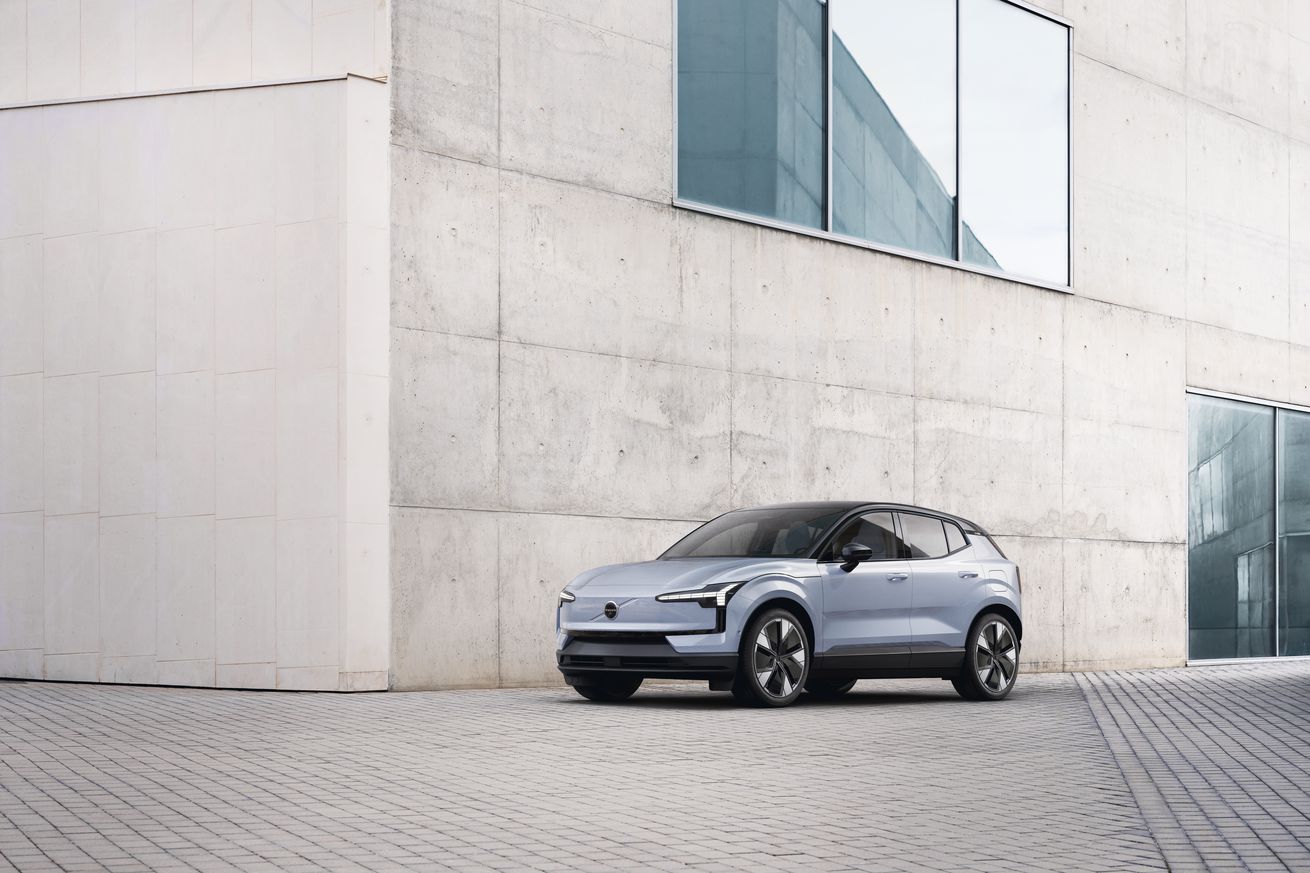
Volvo aims to shake up the EV market with the affordably priced EX30 compact SUV
EVs are getting big — too big, some say — so it’s refreshing to see Volvo trend in the other direction. The Swedish automaker’s next EV, the compact EX30 SUV, is powered by a modest battery that nevertheless manages to churn out a decent amount of range.
But more compelling than that is the starting price tag of $34,950, which is impressive when you consider how expensive EVs have gotten in recent years. Volvo is leaning into the “small” motif, referring to today’s announcement as an “unboxing” event. An early teaser image featured a giant hand coming down from the sky to pick up the EX30.
“We like to say the EX30 is small yet mighty, because it delivers on everything you’d want from a Volvo but in a smaller package,” Volvo CEO Jim Rowan said in a statement.
Of course, Volvo hasn’t shied away from big vehicles; its upcoming EX90 SUV is a luxury three-row family mover based on the automaker’s popular XC90 SUV. But in a market where bigger vehicles tend to require bigger batteries with bigger carbon footprints, Volvo’s effort to offer an affordable EV in a smaller category is downright quaint.
To be sure, Volvo is skimping on the specs. The EX30 will come in two trims: a single-motor extended-range model and a higher-performing dual-motor version. Both will feature a 69kWh battery with 64kWh of usable power. That battery can accept up to 153kW of DC fast charging for a zero to 80 percent charge time of 26.5 minutes.
“We like to say the EX30 is small yet mighty, because it delivers on everything you’d want from a Volvo but in a smaller package.”
The EX30’s extended-range motor is in the rear axle and can put out 268 horsepower and 253 pound-feet of torque, while the dual-motor version adds a 154-horsepower motor to the front axle as well for a total of 422 horsepower and 400 pound-feet of torque. The single-motor model can leap from zero to 60mph in 5.1 seconds, while the AWD version can do the spring in 3.4 seconds — Volvo’s fastest accelerating car ever.
Range-wise, the single-motor version will get an estimated 275 miles, while the dual-motor trim will stop short at 265 miles. Both are just estimates, though, and the EPA’s final rating is likely to be slightly less.
Volvo’s emphasis on small is all relative when you dig a little deeper into the specs. The EX30 has a slightly shorter wheelbase (104.3 inches) than the Volkswagen ID.4 (108.9 inches) and the Tesla Model Y (113.8 inches) but a little more cargo capacity (31.9 cubic feet versus the ID.4’s 30.3 cubic feet and the Model Y’s 30.2 cubic feet). Overall, the EX30 is 166.7 inches in length, 61.1 inches tall, and 80 inches wide.
To be sure, Volvo is skimping on the specs
Volvo is also producing a limited-edition Cross Country variant of the EX30, which comes with “a range of bespoke features, such as more ground clearance, 19-inch black wheels and the option of 18-inch wheels with bespoke tires.”
While the EX30 won’t have some of the more expensive sensors that can be found on the EX90, like lidar laser sensors to aid the driver in avoiding objects on the road, it will have some cool safety tech of its own.
It will be Volvo’s first car to include the next-generation version of Park Assist Pilot that purports to “handle all types of parking spaces, including parallel, curved, perpendicular and diagonal fishbone-style.” It will also have a special safety feature that sounds an alert if a cyclist or pedestrian is passing right as you’re about to open your door — to avoid “dooring” them.
Like other Volvo vehicles, the portrait-style touchscreen runs an operating software that features native versions of Google apps, like Maps, Assistant, and Play. Other software suppliers, like Apple and Qualcomm, will also be involved in helping deliver the EX30’s user experience — as well as Ecarx, a connected car startup owned by Volvo’s parent company, Geely.
Still, the EX30 is likely to have a lot of competition when it comes out next year. In addition to the compact two-row electric SUVs currently dominating the market — Tesla Model Y, Ford Mustang Mach-E, Hyundai Ioniq 5, and Kia EV6 — there is also a slew of new models coming out that Volvo will need to contend with, including the Chevy Equinox and Blazer EVs, Polestar 3, and Honda Prologue.
Volvo has said it plans to sell 600,000 EVs by the middle of the decade and will build a battery manufacturing facility in Europe by 2026. The company is working with Swedish partner Northvolt on a new generation of batteries with higher energy density designed to be integrated as a structural element of the vehicle. The new batteries, due after 2025, will enable a longer driving range between charges — up to 625 miles (1,006km) — and much faster charging times.
To date, Volvo has released two long-range EVs: the XC40 Recharge, which went on sale in 2021, and the C40 Recharge, which was released this year. The EX90 was delayed until early next year as a result of software snafus.

